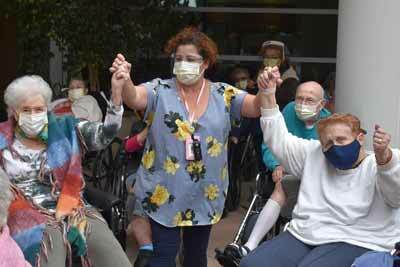Recipe for a Sweet New Year at the Los Angeles Jewish Home

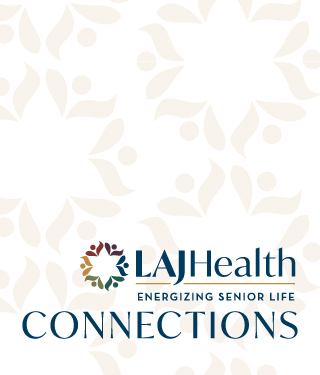
Recipe for a Sweet New Year at the Los Angeles Jewish Home
What a difference a year makes! Last fall, we ushered in Rosh Hashanah and Yom Kippur amidst a global pandemic that kept people isolated in their homes and unable to connect with loved ones. This September, as the High Holy Days circled back around, residents of the Los Angeles Jewish Home had the opportunity to kindle the festival lights once again—in person—with fellow members of their caring community.
This year, Grancell Village residents gathered and prayed with Chief Mission Officer Rabbi Karen Bender and singer Benzy Kogen in the campus's beautiful outdoor space. Rabbi Ron Goldberg and Cantor Joel Stern led lovely services in the synagogue at Eisenberg Village and on the outdoor patio of the Home's acclaimed Goldenberg•Ziman Special Care Center. No matter the venue, the sense of joy was evident, as residents came together to mark the start of a new year and to share thoughts and feelings about the 12 months ahead.
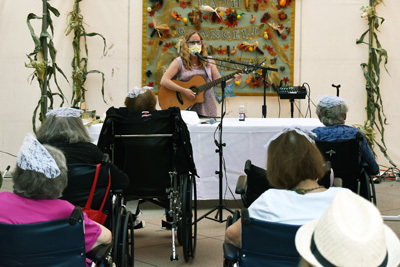
"We were thrilled to offer a number of different types of services, including a special High Holy Days experience that was less traditional and more music-based," Rabbi Bender says. "This approach was particularly meaningful for our residents with memory challenges because music is often what speaks to them most powerfully."
Given the ongoing public health requirements around COVID-19, residents' families were not able to join them on campus for the services, although they are now able to visit at other times. "Safety is always number one at the Jewish Home, and we have to protect everyone," Rabbi Bender explains. "By limiting our residents' exposure to larger groups of people, we helped minimize risk, thus keeping everyone at the Home healthier."
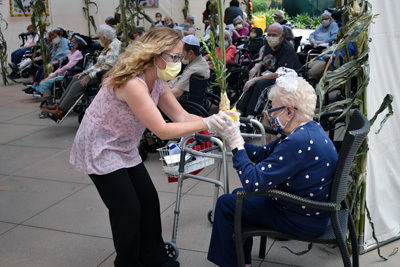
Rabbi Bender says you could feel the electricity in the air during this year's High Holy Days at the Home. "There was tremendous enthusiasm throughout the campuses. You could tell how appreciative the residents were that our internal community could be together again!" Rabbi Bender says. "It was this sense of residents feeling as if they were part of something big, like in ancient times when people would always gather at the Temple for holidays. It was really special."
While all participants at the High Holy Day events were masked and social distanced to ensure maximum safety, for those residents who felt more comfortable remaining in their rooms, the Jewish Home also livestreamed services on closed-circuit TV.
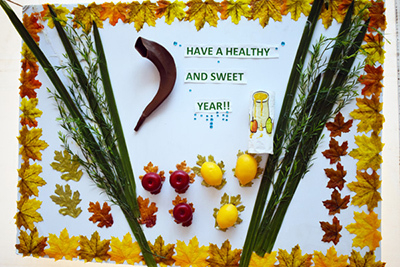
However they chose to participate, residents found the support and assistance they needed. "During this time of year, I'm always mindful that, although aging in place is fantastic for people who can do it, there's nothing quite like having the kind of built-in community we have at the Jewish Home," Rabbi Bender says. "I would guess 95 percent of seniors across Los Angeles didn't have the luxury of attending in-person services this year. But at the Home, all residents had to do was say ‘yes,' and the services were made available to them."
This access to services extended to Sukkot, also known as the Festival of Booths. Rabbi Bender welcomed residents to the Jewish Home's sukkah, which she noted was the largest she had ever seen. Inside, she encouraged residents to speak aloud the names of people—loved ones or historical figures from their imagination—with whom they would like to celebrate the holiday. Then she offered up a meaningful symbolic blessing to include them in the festivities: "Let us invite them to ‘come into the sukkah' to be with us here today."
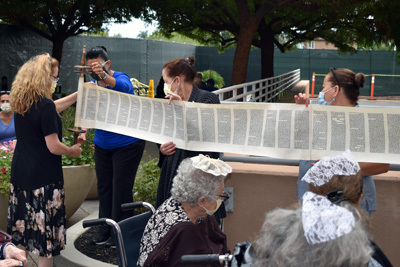
The Simchat Torah celebration was so joyful it was a highlight of the year for many residents. The Torah was completely unrolled for all the residents to see. Festive music played as enthusiastic staff helped residents dance with the Torah.
Rabbi Bender shared that the Home has always been a terrific place to mark important Jewish milestones. "One of the amazing things about the Jewish Home is, if you happen to be Jewish, we provide everything you would have experienced at your home and at your synagogue," she says. "We recognize Judaism is a tradition that's practiced both at synagogue and in the home. Living here, we cover all the bases."
